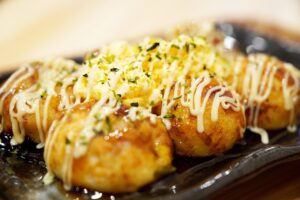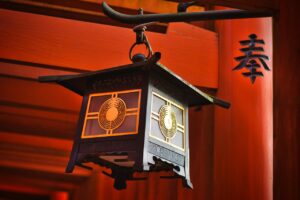Step into a world where the air hums with energy, a vibrant chorus of cheerful vendors, sizzling grills, and the excited chatter of hungry visitors. This isn’t just a market; it’s the beating heart of Osaka’s culinary soul, a place affectionately known for centuries as Tenka no Daidokoro—The Nation’s Kitchen. Welcome to Kuromon Ichiba Market, a sprawling, covered arcade that stretches for nearly 600 meters, a sensory wonderland dedicated to the city’s undying passion for food. Here, the philosophy of kuidaore, to eat until you drop, isn’t just a saying; it’s a way of life. The market is a dazzling labyrinth where gleaming displays of the ocean’s freshest bounty sit alongside perfectly marbled wagyu beef, jewel-like fruits, and steaming local delicacies. It’s a place where seasoned chefs from Osaka’s finest restaurants haggle for their daily ingredients alongside curious travelers, eyes wide with wonder. For anyone looking to understand what makes Osaka the undisputed food capital of Japan, the journey begins here, under the colorful lanterns of Kuromon. It’s an invitation to explore, to taste, and to immerse yourself completely in a spectacle of flavor that has been perfected over generations. Prepare your senses, bring an empty stomach, and get ready to discover why this legendary market is an essential pilgrimage for food lovers from across the globe.
After experiencing the culinary spectacle of Kuromon Ichiba, continue your food journey by exploring the must-try street food in Dotonbori.
The Symphony of the Senses: Kuromon’s Electric Atmosphere
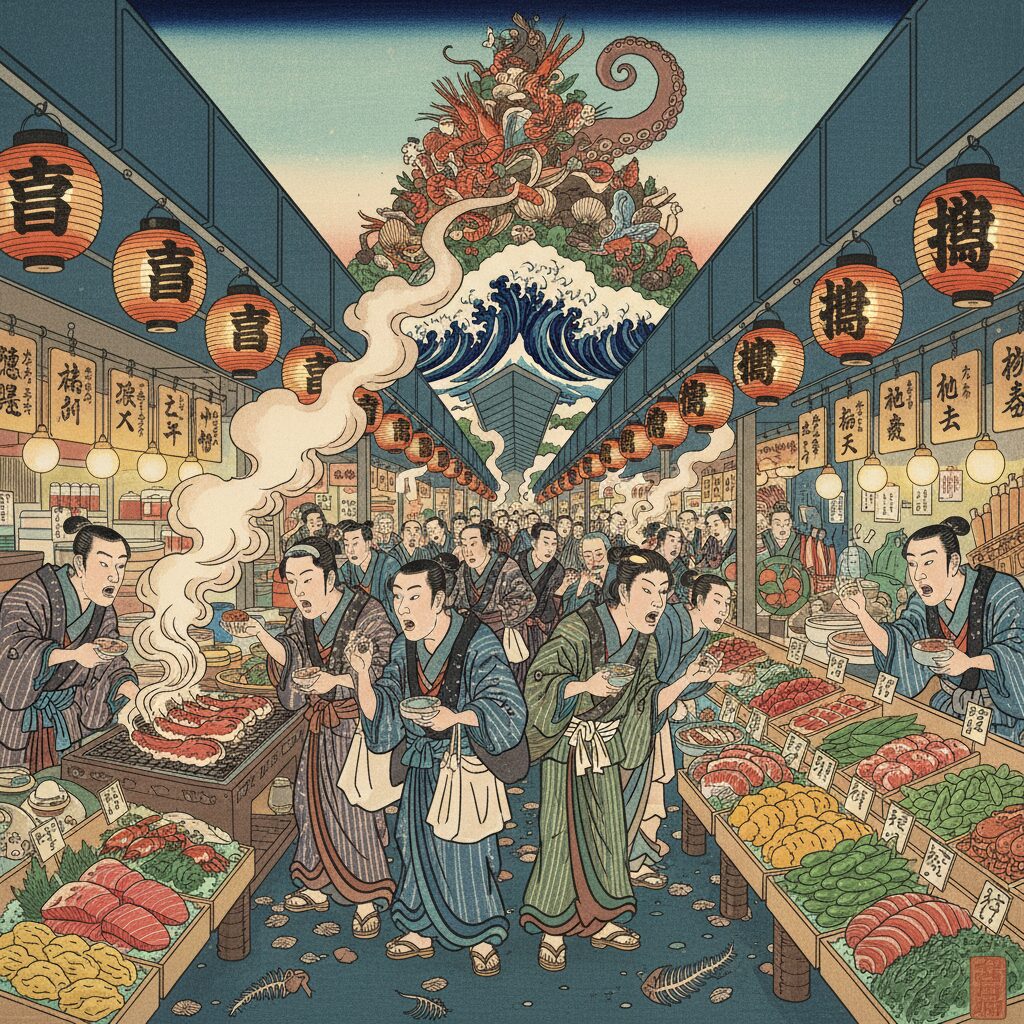
The moment you pass through the archway of Kuromon Ichiba, the outside world dissolves, replaced by an intoxicating blend of sights, sounds, and aromas. The first thing you notice is the vibrant energy of the market—a steady, flowing current of people weaving through the narrow arcade. The air is thick with a delicious haze—a complex fragrance of salty ocean brine from fishmongers, sweet caramelizing soy sauce from grilling eel, savory steam rising from dashi broth, and the smoky char of wagyu beef searing over open flames. Your ears are alive with a joyful cacophony: the rhythmic clatter of knives on wooden blocks, enthusiastic calls of vendors shouting “Irasshaimase!” (Welcome!), the sizzle and pop of fresh scallops on a hot griddle, and the multilingual murmur of visitors from around the world admiring the culinary treasures. Visually, it’s a feast for the eyes. Mountains of crushed ice hold glistening fish, their scales gleaming like silver armor under bright market lights. Deep crimson slabs of premium tuna, vibrant orange sea urchin nestled in spiky black shells, and colossal king crab legs form a stunning mosaic of color. Look closer, and the market’s charm reveals itself: the careful arrangement of strawberries in a perfect pyramid by a vendor, the focused precision of a chef torch-searing sushi, the warm smile of an elderly woman offering homemade pickle samples. This blend of vibrant commerce and genuine personal connection defines Kuromon’s unique character. It feels less like a tourist spot and more like a living, breathing community hub where a shared love of exceptional food unites everyone.
The Crown Jewel: Tuna, the King of the Market
Among the countless seafood wonders at Kuromon, nothing commands greater reverence than maguro, the majestic bluefin tuna. Stalls devoted to this extraordinary fish resemble shrines, attracting crowds who admire the massive ruby-red blocks of meat with awe. Here is where you can truly savor the art and science of tuna. You’ll encounter the three main cuts, each delivering a unique experience. First, there’s akami, the lean, deep red meat from the fish’s main body. It boasts a firm texture and a pure, clean ocean flavor—a perfect introduction. Next is chutoro, the medium-fatty tuna, a gorgeous pinkish-red marbled with delicate streaks of fat. This is where the magic begins. The flavor deepens, the texture softens, melting slightly on the tongue with an ideal balance of meatiness and buttery smoothness. But the ultimate prize—the cut revered by connoisseurs—is otoro. This fattiest part of the tuna, usually from the belly, is a pale, luscious pink, so richly marbled it resembles fine Kobe beef. Eating otoro is an experience itself; it requires no chewing, dissolving instantly into a wave of incredibly rich, sweet, and savory umami that envelops your entire palate. At Kuromon, these cuts can be enjoyed in various forms. The purest is sashimi, featuring thick slices served simply with a dab of wasabi and a light touch of soy sauce. You can also find exquisite sushi, where a skilled chef presses a perfect slice of otoro atop a small mound of seasoned rice. For a warmer option, seek out grilled tuna skewers—especially from the cheek or collar—which are remarkably juicy and flavorful. Some larger shops, such as the renowned Kuromon Maguroya Kurogin, often host tuna carving demonstrations: a thrilling display of skill where a massive fish is expertly broken down with long, specialized knives. Watching a master butcher deftly carve a multi-hundred-pound tuna is a piece of culinary theater you won’t soon forget.
Treasures from the Deep: Sea Urchin and Scallops
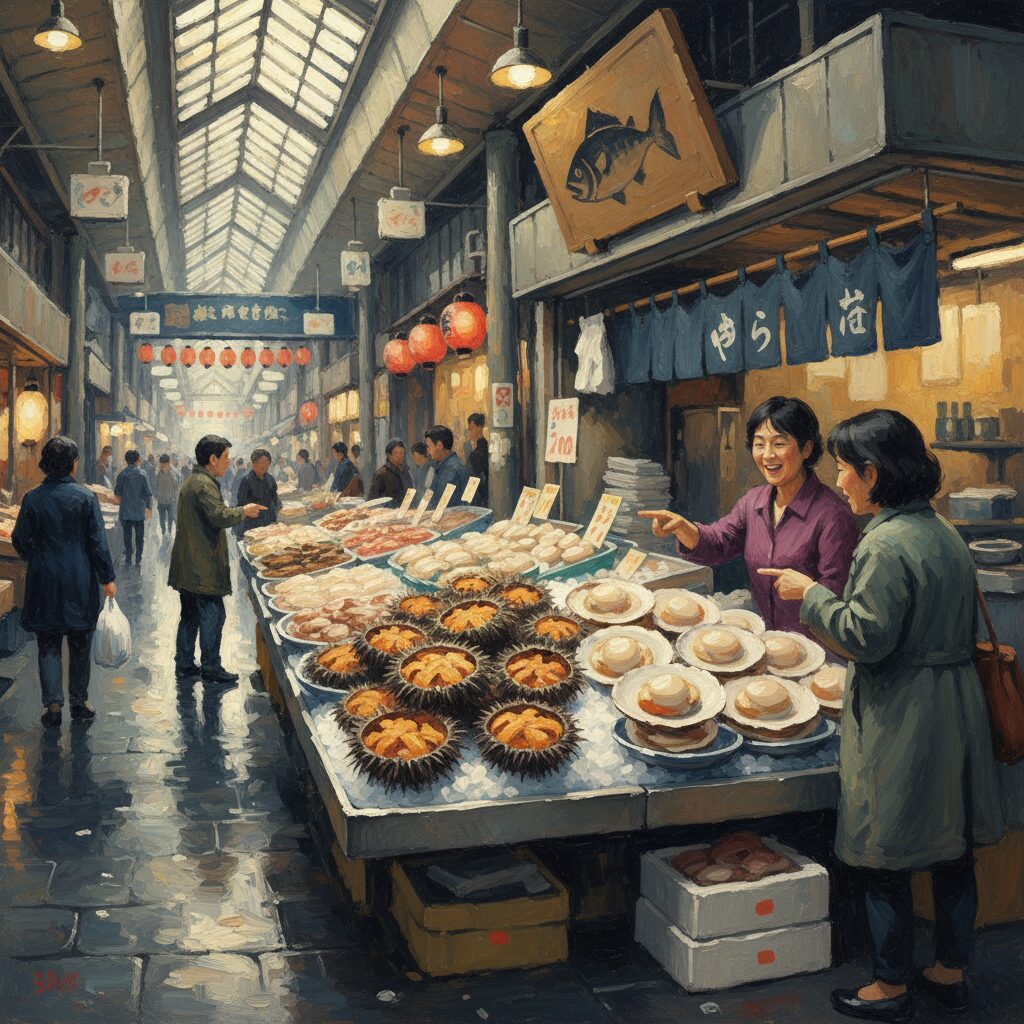
The Golden Cream: Uni
As you walk through Kuromon, your gaze will naturally be drawn to trays filled with what resembles bright orange gold. This is uni, or sea urchin roe, a delicacy cherished for its distinctive texture and complex flavor. Often served fresh inside its intimidating, spiky dark purple shell, the uni is opened right before your eyes, revealing five flawless, tongue-shaped segments of roe. The finest uni features a firm yet delicate texture and varies in color from pale yellow to a rich, deep orange. Its taste is a delightful contradiction—intensely oceanic yet sweet, briny yet clean, with a creamy, custard-like consistency that melts luxuriously on the tongue. There’s no middle ground with uni; people either fall completely in love with it or find it too unusual. For the adventurous, sampling it fresh from the shell at Kuromon is almost a rite of passage. Vendors typically present it with a small spoon, and that very first bite, with its pure, unfiltered taste of the sea, is an unforgettable experience. Some stalls also serve it as a sushi topping, generously layered over rice, or even as a decadent addition to a bowl topped with salmon roe and tuna. It’s a splurge, but one that offers a genuine taste of Japanese culinary luxury.
Flames and Flavor: Hotate
Follow the irresistible aroma of sizzling butter and caramelizing soy sauce to the hotate (scallop) vendors. These scallops are anything but small; the ones at Kuromon are massive, with thick, plump, pearly-white adductor muscles. The most popular way to enjoy them is grilled fresh on the spot. You select your scallop, the vendor shucks it, returns it to its half-shell, adds a generous pat of butter and a splash of soy sauce, then sears it with a blowtorch or on a grill. The process is captivating to watch. The butter melts and bubbles, the soy sauce sizzles and thickens into a savory-sweet glaze, and the scallop’s edges develop a lovely light char while the inside stays tender and juicy. The result is pure bliss in every bite. The scallop’s natural sweetness is heightened by the salty, umami-rich glaze, and the buttery richness makes it indulgently decadent. The texture is exquisite—a slight firmness on the outside that gives way to a soft, almost silky center. Served piping hot in its shell, it’s a perfect handheld treat that warms you from within. Some vendors offer variations, adding a sprinkle of cheese that melts into a gooey topping or a dash of sake for extra depth. It’s a simple preparation that perfectly showcases the ingredient’s quality, capturing the essence of Japanese cuisine.
More Than Fish: The Land’s Bounty
While seafood undoubtedly takes center stage, Kuromon Ichiba also presents an impressive variety of delights from the land, truly embodying its role as Osaka’s kitchen. The enticing sizzle and aroma of grilling meat will draw you to stalls featuring premium Japanese beef, including the famed Kobe beef. Served on handy skewers, these bite-sized pieces of A5-grade wagyu exemplify luxury. So richly marbled, the fat begins to melt as soon as it hits the heat, basting the meat from within. The result is an incredibly tender, melt-in-your-mouth experience, with a rich, beefy flavor that is both delicate and profound. A simple sprinkle of salt and pepper is all it requires. Though expensive, these skewers offer an unforgettable taste of one of the world’s most treasured meats.
The market is also a haven for fruit enthusiasts. Japan is renowned for its meticulously cultivated, perfect fruits, and Kuromon is an excellent place to sample them. Depending on the season, you might encounter enormous, perfectly sweet strawberries, some so pale they appear almost white (shiroi ichigo), boasting a unique, candy-like taste. In summer, you may find outrageously juicy peaches or flawlessly round melons that are as much art as food. While fruit stalls sell whole fruits, they also offer freshly cut slices and refreshing fruit juices for travelers’ convenience. A cup of fresh strawberry juice or a skewer of chilled melon serves as an ideal palate cleanser after a rich meal of grilled seafood or beef.
Beyond the immediate pleasure of street food, you can browse stalls offering an extensive range of tsukemono, or Japanese pickles. From salty pickled plums (umeboshi) and crisp daikon radish to brightly colored pickled ginger, these are indispensable elements of the Japanese diet. Vendors often provide samples, allowing you to explore the remarkable variety of flavors and textures achievable through the simple art of pickling. You will also find shops specializing in dashi ingredients like kombu kelp and bonito flakes, green tea, and traditional Japanese sweets such as mochi—soft, chewy rice cakes filled with sweet red bean paste.
The Enigmatic Delicacy: A Taste of Fugu
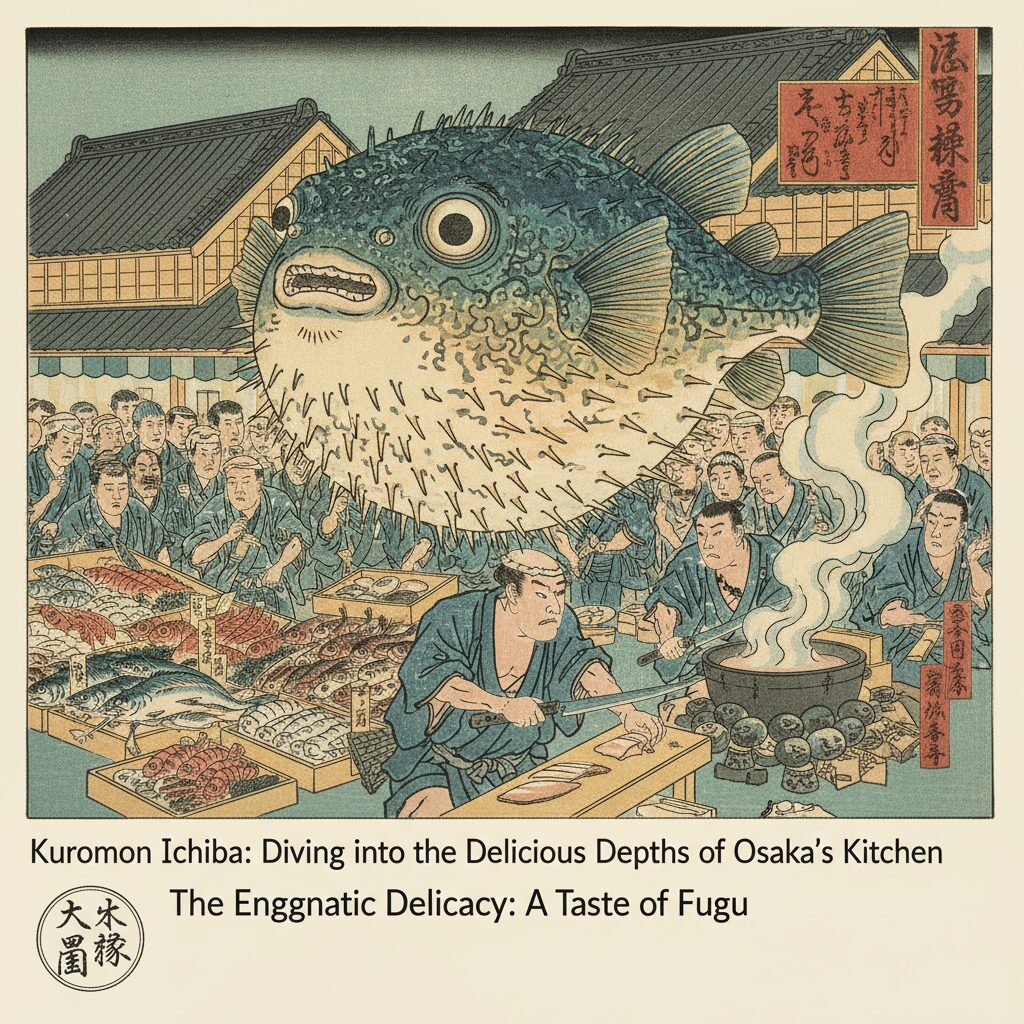
For the truly adventurous culinary explorer, Kuromon presents an opportunity to sample one of Japan’s most renowned and legendary foods: fugu, the pufferfish. Known for its potent neurotoxin, fugu can only be prepared and served by highly skilled and licensed chefs who expertly remove the poisonous parts with surgical precision. When properly prepared, the risk is virtually nonexistent, yet the mystique endures. At Kuromon, specialty shops showcase these master chefs at work. The classic way to enjoy fugu is as tessa, or thinly sliced sashimi. The slices are artfully arranged on a plate, often in the shape of a chrysanthemum flower—a symbol of death in Japanese culture—highlighting the fish’s dangerous reputation. The flesh is nearly translucent, with a unique texture that is firm, slightly chewy, and very delicate. Its flavor is subtle and clean, offering a fresh taste of the sea with a lingering, faint sweetness. It is typically served with ponzu, a citrus-based soy sauce, and momiji-oroshi, a spicy grated daikon and chili mixture. For an alternative, you can try fugu karaage, where the fish is deep-fried, yielding a texture reminiscent of tender chicken but with a distinct seafood flavor. While the taste is more understated than bold, the experience of eating fugu—trusting the chef’s expertise and participating in a centuries-old culinary tradition—is what makes it so unforgettable.
Practical Wisdom for Navigating the Market
To get the most out of your adventure in Kuromon Ichiba, a little planning can make a big difference. The market is easiest to reach from Nippombashi Station, served by both the Sennichimae and Sakaisuji subway lines. Exiting at number 10 will bring you right to the entrance of the market’s main arcade, providing great convenience.
Timing your visit is important. The market opens around 9:00 AM, and the early morning is an excellent time to visit. The seafood is at its freshest, and the crowds are smaller, letting you explore leisurely and watch vendors prepare for the day. The energy peaks around lunchtime, typically between 12:00 PM and 2:00 PM. This is when the market is most lively and crowded, but the narrow aisles can make it harder to move around. If you prefer a quieter experience, consider coming in the late afternoon around 3:00 PM or 4:00 PM, though keep in mind some popular items might be sold out, and some stalls could start closing.
When it comes to payments, cash remains the preferred method at many smaller, traditional stalls. Larger shops and those catering to tourists may accept credit cards, but it’s wise to carry enough Japanese Yen to avoid any hassle. This also gives you the flexibility to spontaneously buy small items from any vendor that catches your eye.
The market’s eating culture is called tabe-aruki, meaning ‘eat-walk’. However, walking while eating is generally considered rude in Japan. To respect this, most food stalls offer small designated eating areas, such as a few stools at the counter or a small space beside the stall. Look for these spots to enjoy your food politely. Additionally, there are communal rest areas known as ‘Free Lounges’ throughout the market, equipped with tables and trash bins. Properly disposing of skewers, shells, and wrappers is very important, so be sure to use these areas.
For first-time visitors, the abundance of choices can feel overwhelming. A smart approach is to first do a full walkthrough to see all the offerings before purchasing. This lets you mark the stalls that appeal most and plan your meal course by course. Don’t hesitate—vendors are accustomed to tourists, and pointing is an acceptable way to order. A simple “Kore, kudasai” (This one, please) works perfectly. Most importantly, come with an open mind and an empty stomach. Kuromon is a place of discovery. Try unusual shellfish, sample pickles, and indulge in that perfect piece of otoro. Pace yourself, savor every bite, and let the amazing flavors of Osaka’s Kitchen tell their story.
A Final Taste of Osaka’s Heart
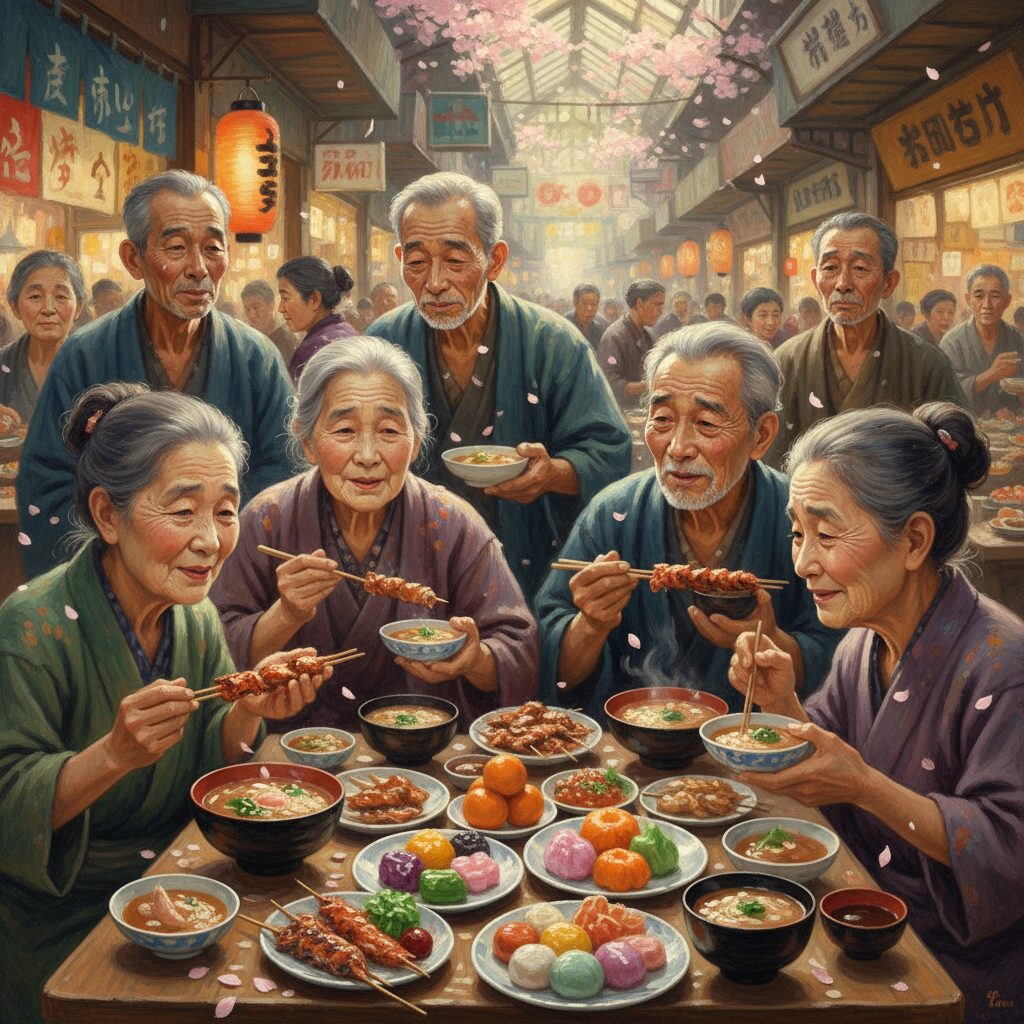
Leaving Kuromon Ichiba feels like emerging from a vivid dream. You step back onto the streets of Nippombashi, your senses still alive with the lingering flavors of salty oysters, sweet grilled eel, and the rich umami of fresh tuna. The lively buzz of the market continues to echo in your ears. More than just a collection of shops, Kuromon stands as a living, breathing testament to Osaka‘s identity. It is a place where tradition is cherished, quality is paramount, and the simple act of eating is transformed into a joyous celebration. Visiting here is not simply about sightseeing; it’s an interactive culinary education and a delicious immersion into the culture of kuidaore. You leave with a full stomach, a camera roll filled with vibrant photos, and a deeper appreciation for the passion and pride that sustain this remarkable city. It’s a memory to savor long after the last bite, a flavorful reminder of the vibrant, pulsing heart of Osaka.




